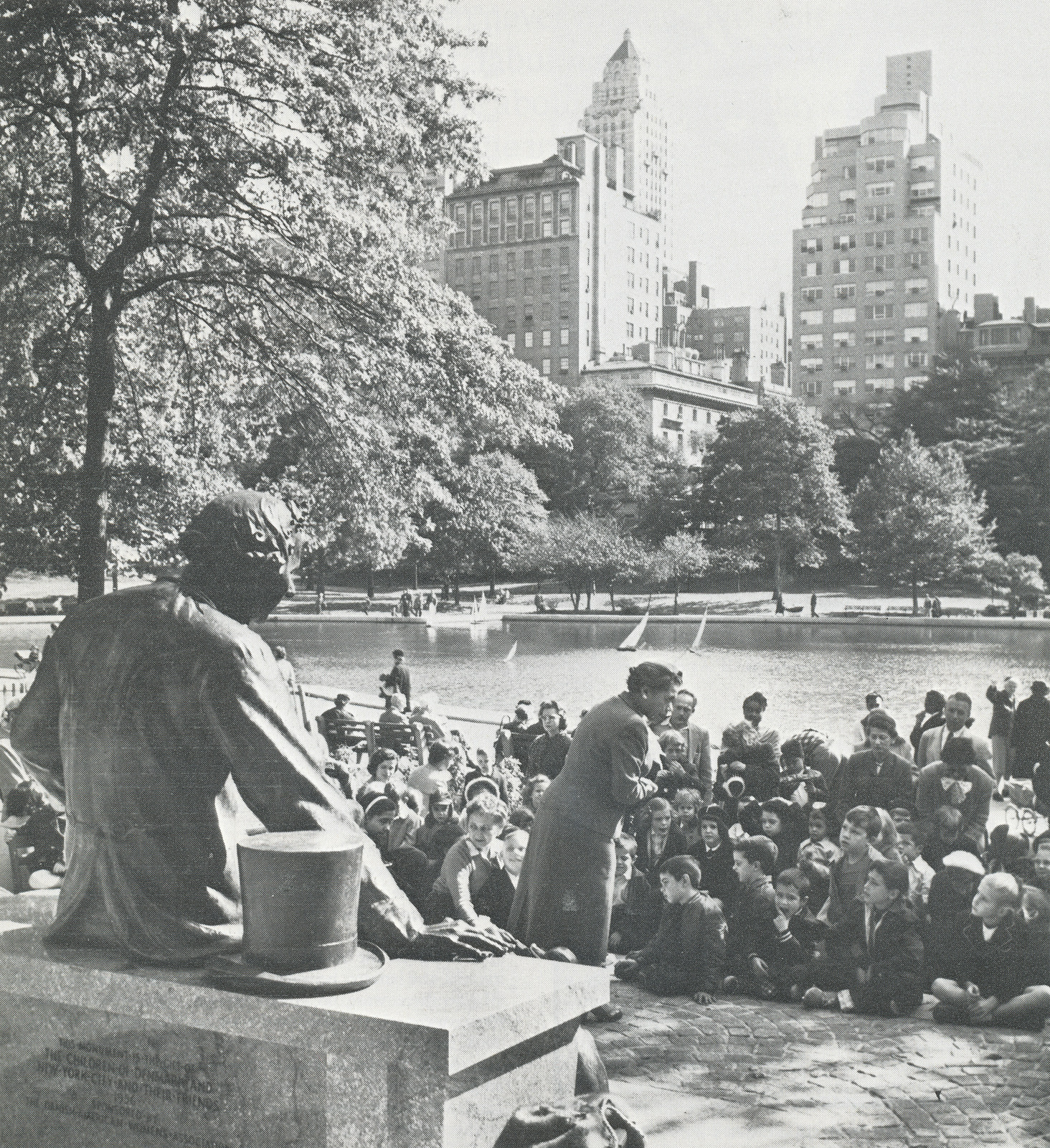H.C. Andersen statue in Central Park where his fairy tales are read aloud to children.
Did the inspiration for that outburst come from the author of The Song of Hiawatha? Longfellow was an abolitionist, and, by correspondence, the two poets had become friends.
Master Bloodless
The most significant connection between Andersen and the New World is to be found in his interests and his philosophy. The technical world of the future fascinated him. No man in the nineteenth century was more often photographed than Andersen; and this was not only an expression of his vanity, he considered it a new art. To Andersen scientists and inventors were also poets. Was not their spirit of wishing to know and understand the same as the artist’s? He did not conceive of the gulf that today separates art from science. The trials of the Greek poet Homer and the misadventures of the inventor of the steamboat, the American Robert Fulton, are both included in Andersen’s essay ‘The Thorny Path.’ If the world was to be divided, it was between those who strove to fulfil the gifts that God had given them, and those who out of envy or stupidity victimized them.
Although Andersen heralded the world that was to come, he was not without misgivings. He called the machine Master Bloodless, and he hoped we would make it our servant. Few can claim today that we have succeeded. Many believe the machine to be the symbol of evil and many more are its willing slaves. Yet ‘eternity is long’, as Andersen tells us in the lovely fairy tale ‘Everything in its Right Place;’ and we may still learn to be masters of that which we, ourselves, have created. Then we may experience a time in which science inspires the arts, as Andersen suggests in ‘The California of Poetry .’
In the last years of his life, Andersen found in the American author and editor of The Riverside Magazine, Horace E. Scudder, an admirer and friend. Rewarding for both men, this relationship resulted in the amazing fact that ten of Andersen’s tales from his later years appeared first in the United States of America, instead of his native land. Among these was ‘The Most Incredible,’ a brilliant tale of ‘fascism’, which, unfortunately, is more poignant today than when it was written. ‘The Adventures of a Thistle’ was another of the stories published first in America, and I would include it among Andersen’s finest works.
Immortality is a word we use to describe a heart and a brain that cannot die. Certainly the fact that we are now celebrating the hundredth anniversary of the poet’s death means that Andersen has won this final and greatest honour of all. His statue stands in Central Park and there his fairy tales are read aloud to children. Do they know that he was Danish, and does it matter? They may think him an American, for the story of his life follows so closely the American dream. He called his fairy tales his ‘gift to the world’; and the children have come to hear the song of the nightingale, a treasure which belongs to all of us, be we fishermen or emperors.
The author: Erik Christian Haugaard was born in Copenhagen 1923. Went to the United States at America in 1940, served with the Royal Canadian Air Force 1943-45. Now lives in Eire. Has written poetry and plays, but is best known tor his children’s novels. His translations of Andersen’s complete fairy tales and stories were published 1974 by Doubleday and Co., Inc., New York, and Victor Gollancz Ltd., London.
